
Introduction
E-commerce is currently developing at an unprecedented pace. For many newcomers, stepping into the e-commerce field can feel daunting and fraught with challenges. However, a successful e-commerce store is not out of reach. By mastering key strategies and methods, you can stand out in the fierce competition. As a seasoned professional with extensive experience in the e-commerce industry, I aim to share practical insights and actionable steps in this blog to help newcomers quickly get started and find their path to success. Whether you are just considering entering the e-commerce market or have already taken your first steps, the experiences and advice provided here will guide you on your e-commerce journey and help you achieve success.
Successful E-Commerce Store Examples
Successful e-commerce stores span various fields globally, gaining recognition and trust from consumers through innovative business models, excellent user experiences, and efficient operational management.
Here are examples of e-commerce stores that have achieved remarkable success in their respective domains:
1. Amazon
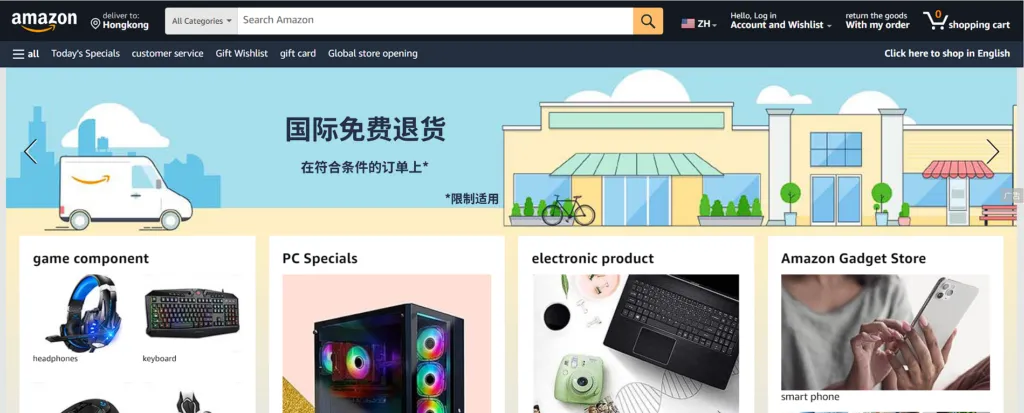
Domain
General E-commerce
Features
The largest online retailer globally, offering a vast range of products from books and electronics to everyday items. Amazon is renowned for its exceptional user experience, fast delivery (Prime service), and powerful data analytics capabilities.
2. Alibaba
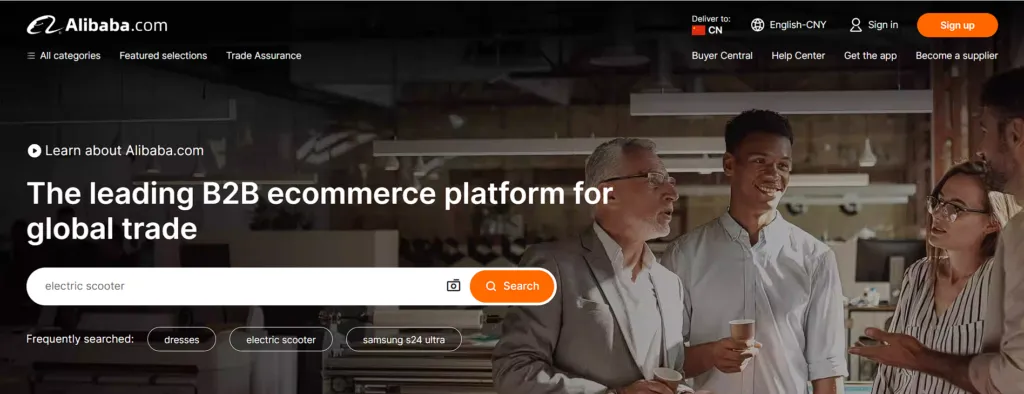
Domain
B2B E-commerce
Features
The leading B2B e-commerce platform globally, connecting buyers worldwide with Chinese manufacturers, providing services ranging from small batch purchases to bulk transactions. Alibaba plays a crucial role in cross-border trade.
3. Taobao
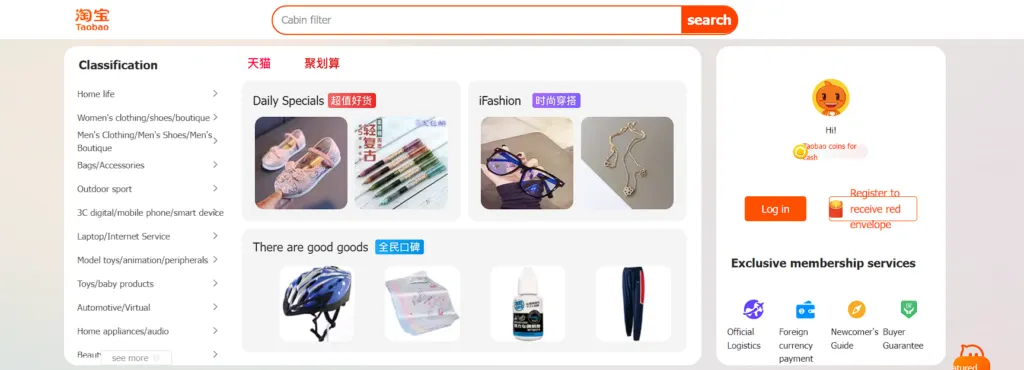
Domain
C2C/B2C E-commerce
Features
The largest online shopping platform in China, offering a wide variety of products from individual sellers to branded stores. Taobao attracts a large user base with its diverse product selection, innovative marketing strategies (such as live streaming), and robust social shopping experience.
4. JD.com
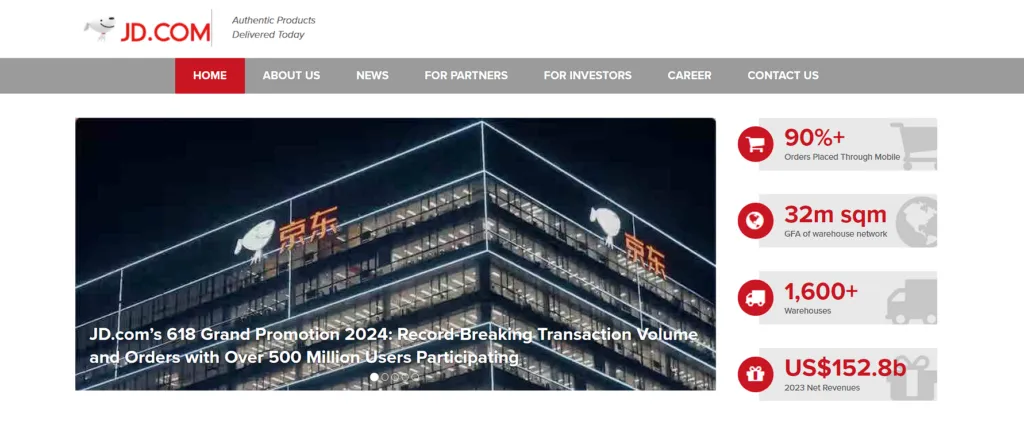
Domain
B2C E-commerce
Features
The second-largest e-commerce platform in China, earning consumer trust through its efficient logistics system and guaranteed genuine products. JD.com excels particularly in electronics, home appliances, and everyday goods.
5. eBay
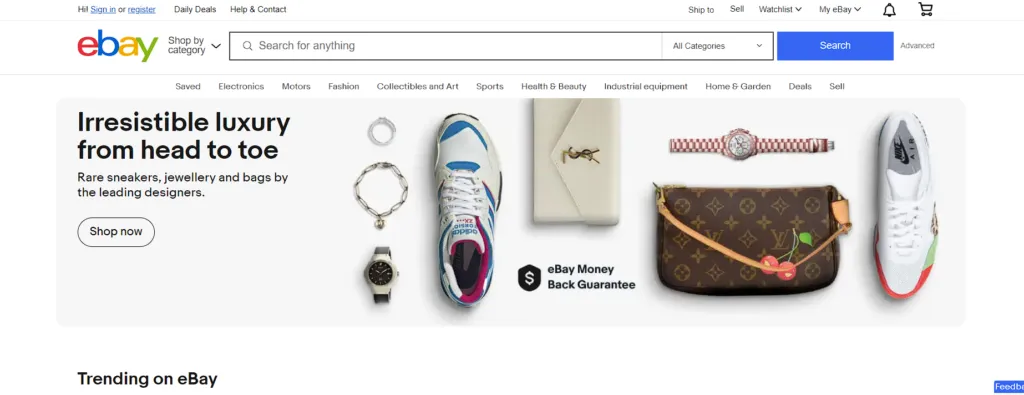
Domain
C2C E-commerce
Features
A globally recognized online auction and shopping platform where users can buy and sell new and used items. eBay's auction mechanism and global market reach provide a unique advantage in second-hand goods transactions.
6. Etsy
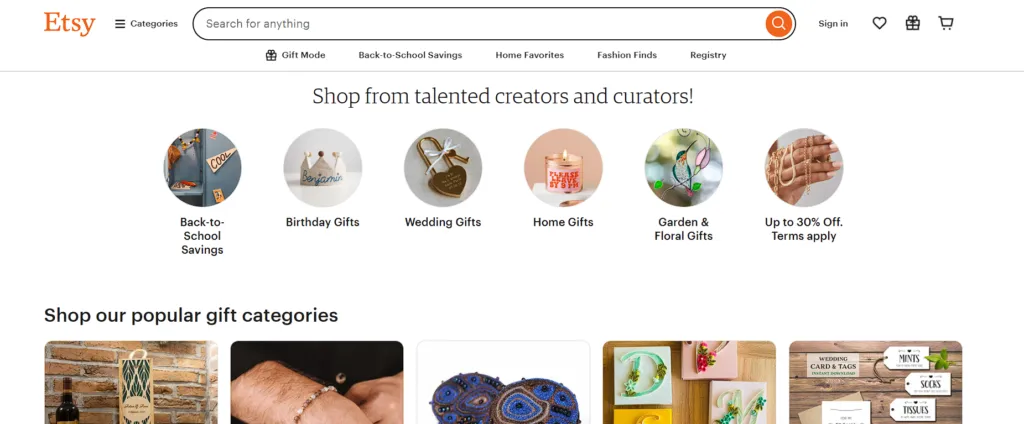
Domain
Handmade and Creative Goods
Features
An e-commerce platform focused on handmade items, art, and antiques, offering a marketplace for creative individuals worldwide to showcase and sell their creations. Etsy attracts many craft enthusiasts with its unique products and community atmosphere.
7. Shopify
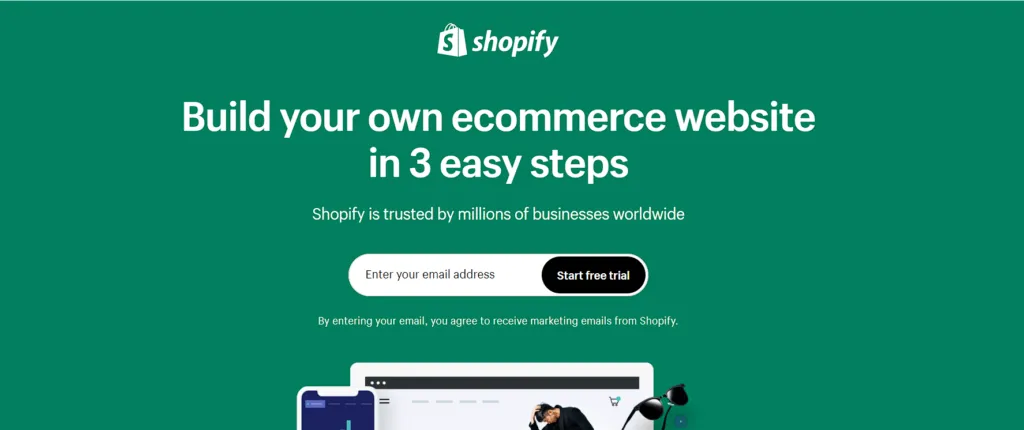
Domain
E-commerce Platform Services
Features
Provides tools and services for businesses and individuals to build and manage online stores. Shopify's ease of use and powerful features make it the preferred e-commerce platform for small and medium-sized enterprises and independent merchants.
8. Zara

Domain
Fashion Apparel
Features
The Spanish fashion brand Zara successfully translated its fast fashion model online, offering the latest trends in clothing. Its online store wins consumers with frequently updated products and a convenient shopping experience.
9. Nike

Domain
Sports Goods
Features
The globally renowned sports brand Nike excels in e-commerce, offering personalized customization, exclusive products for members, and interactive experiences through its online store, strengthening its connection with consumers.
10. Warby Parker

Domain
Eyewear
Features
A successful eyewear e-commerce store, Warby Parker sells high-quality, reasonably priced glasses online, offering convenient try-on services and excellent customer support, winning consumer affection.
11. Chewy

Domain
Pet Supplies
Features
An e-commerce platform specializing in pet food and supplies, Chewy stands out in the pet products market with its exceptional customer service, fast delivery, and extensive product selection.
12. Sephora

Domain
Beauty
Features
A leading global beauty retailer, Sephora's online store offers a wide range of products, personalized recommendations, and beauty tutorials, enhancing the consumer shopping experience.
13. Blue Apron

Domain
Food and Beverage
Features
Provides pre-portioned ingredients and recipes, allowing consumers to cook delicious meals at home easily. Blue Apron wins consumer loyalty through its subscription model and high-quality ingredients.
14. Wayfair
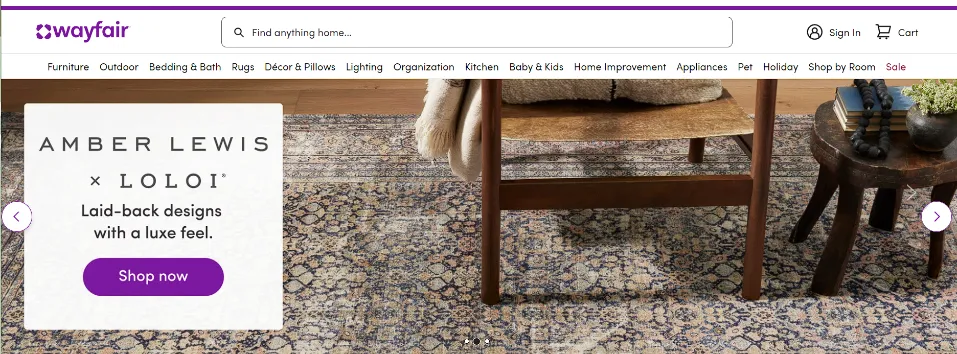
Domain
Home Goods
Features
An e-commerce platform focused on home goods and furniture, Wayfair offers an extensive selection of products and customization services to meet diverse consumer needs.
How to Gain Successful E-commerce Insights?
Acquiring insights from successful e-commerce stores can significantly enhance your ability to establish and manage your own e-commerce business. Here are several effective methods to learn from and leverage the experiences of successful e-commerce stores:
1. Study Successful Cases
Analyze Competitors
- Identify Industry Leaders: Identify successful e-commerce stores in your industry and study their business models, product selections, and marketing strategies.
- Competitive Analysis Tools: Use tools like SimilarWeb and SEMrush to analyze competitors' traffic sources, keywords, and advertising strategies. Utilize BigSpy for analyzing competitors' ad creatives!
Analyze competitor ad creatives using BigSpy!
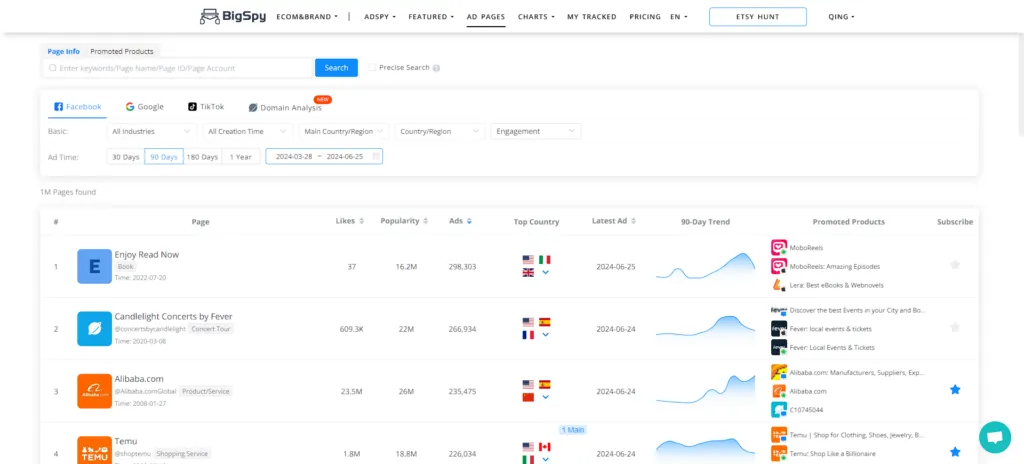
Case Studies
- Case Analysis: Read analysis articles on successful e-commerce cases to understand how they solve problems and achieve growth.
- Industry Reports: Review industry reports and market research to get the latest market trends and data.
2. Join E-commerce Communities and Forums
Online Communities
Industry Forums
- E-commerce Platform Forums: Platforms like Shopify and WooCommerce have official forums where you can learn from other merchants' experiences and advice.
- Professional Forums: Forums like Warrior Forum and Digital Point discuss e-commerce marketing and operational techniques.
3. Attend E-commerce Training and Seminars
Online Courses
Seminars and Webinars
- Industry Conferences: Attend conferences like Shopify Unite and Ecom World to listen to expert talks and learn about the latest trends and technologies.
- Webinars: Register for online seminars hosted by e-commerce platforms and marketing companies to gain practical operational tips. Additionally, learn the specifics of registering a company in Hong Kong to expand your business presence in the Asian market.
4. Read Professional Books and Blogs
Professional Books
- "E-commerce Guide": Learn the fundamentals of e-commerce and operational strategies.
- "The Lean Startup": Learn how to achieve growth through rapid experimentation and continuous improvement.
Professional Blogs
- Shopify Blog: Shares various e-commerce tips and success stories.
- BigSpy Blog: Provides professional advice on e-commerce marketing and market research.
5. Seek Mentors and Partners
Mentor Guidance
- Startup Accelerators: Join e-commerce-related startup accelerators to receive mentorship and resource support.
- Industry Experts: Connect with e-commerce industry experts on LinkedIn to seek advice and guidance.
Partners
- Collaborative Marketing: Partner with other e-commerce stores for joint marketing activities to share experiences and resources.
- Cross-industry Collaboration: Collaborate with brands from non-competing fields to expand your customer base and learn different market strategies.
6. Practical Implementation and Feedback
Small-scale Trials
- MVP (Minimum Viable Product): Launch the minimum viable product first and continually improve based on market feedback.
- A/B Testing: Test different page designs, marketing campaigns, pricing strategies, etc., to find the most effective methods.
Customer Feedback
- Customer Surveys: Use questionnaires and interviews to gather real feedback and suggestions from customers.
- Data Analysis: Use tools like Google Analytics to analyze user behavior data and continuously optimize store operations.
By employing these methods, you can systematically acquire insights from successful e-commerce stores and apply them to your own business, continually improving and optimizing until you achieve success.
How to Start an E-commerce Store in 6 Steps?
After understanding the e-commerce market and how to learn from successful examples, it's time for practical implementation. To build and operate a successful e-commerce store, follow these six detailed steps. Each step requires careful planning and execution, from choosing the right products and platform to designing an attractive store, effective marketing, and continuous optimization. Paying attention to every detail will help you stand out in the competitive e-commerce market.
1. Determine Market and Products
Market Research
- Target Customers: Identify your target customer group, their needs, and buying habits.
- Competitor Analysis: Understand your competitors, their products, pricing, and market strategies.
Product Selection
- Product Choice: Choose products to sell that have market demand.
- Supply Chain Management: Find reliable suppliers to ensure product quality and a stable supply chain.
2. Choose an E-commerce Platform
Platform Selection
- Self-built Platforms: Options like Shopify, WooCommerce or a Magento platform are suitable for merchants who want more control and customization.
- Third-party Platforms: Options like Amazon, Taobao, and JD.com are ideal for those who do not want to invest heavily in development costs initially.
Use BigSpy to gain insight into sellers’ favorite platforms!
Registration and Setup
- Register Account: Sign up for a merchant account on your chosen platform.
- Basic Setup: Configure basic information such as store name, description, and contact details.
3. Build and Design Your Store
Store Design
- Template Selection: Choose a template that fits your brand, ensuring it is clean, attractive, and user-friendly.
- Brand Elements: Add brand logos, colors, and fonts to maintain brand consistency.
Product Upload
- Product Descriptions: Write detailed, compelling product descriptions that highlight key selling points.
- Image Upload: Upload high-quality product images that are clear and realistic.
BigSpy helps you activate more advertising creative inspiration!
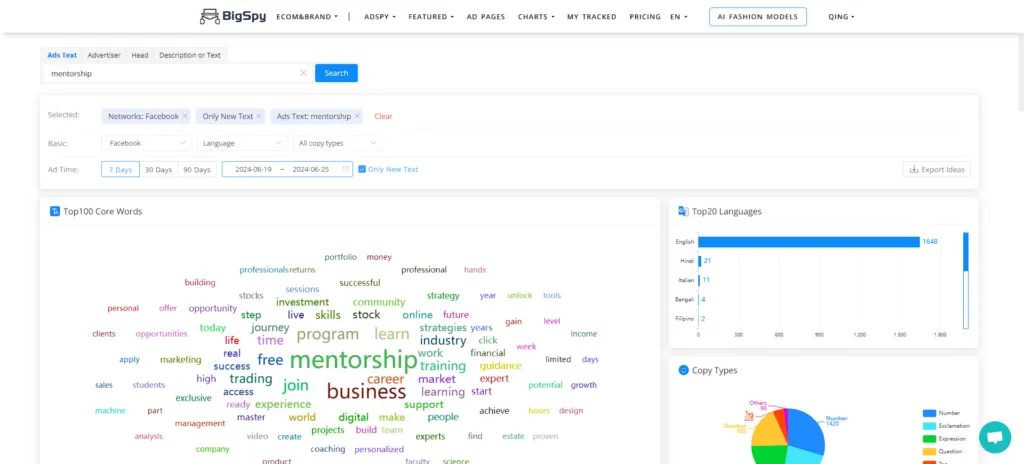
4. Set Up Payment and Shipping
Payment System
- Payment Gateway: Integrate secure and reliable payment gateways like PayPal, Stripe, or Alipay.
- Payment Testing: Ensure the payment system works correctly by testing different payment methods.
Shipping Setup
- Shipping Options: Set up various shipping methods and fees, such as express and standard shipping.
- Logistics Partnership: Choose reliable logistics partners to ensure timely delivery.
5. Launch and Promote
Website Launch
- Testing: Conduct comprehensive e-commerce testing before launch to ensure all functions - such as navigation, checkout, and mobile responsiveness - operate correctly.
- Go Live: Officially launch the website and ensure all links and features work properly.
Marketing Promotion
- SEO Optimization: Optimize website content to improve search engine rankings.
- Social Media Marketing: Promote your store on platforms like Facebook and Instagram.
- Ad Campaigns: Use paid advertising through Google AdWords and Facebook Ads.
6. Operate and Optimize
Operations Management
- Order Processing: Process orders promptly to ensure customer satisfaction.
- Customer Service: Provide excellent customer service and resolve customer issues quickly.
Data Analysis and Optimization
- Data Analysis: Use analytics tools to monitor website traffic, sales data, and user behavior.
- Continuous Optimization: Continuously improve your website and marketing strategies based on data and customer feedback.
By following these steps, you can systematically establish and grow your e-commerce business, leading to long-term success.
How much does it cost to start an e-commerce business?
The initial budget for starting an e-commerce business ranges from approximately 20,000 RMB to 200,000 RMB. The specific costs depend on factors such as the scale of your business, the platform you choose, the types of products you sell, and your marketing strategies. It is advisable to prepare a detailed budget and plan before starting to ensure smooth operation and success.

Here is an outline of the main expenses involved in starting an e-commerce business, providing a rough budget range:
1. Platform Costs
Self-Built Platform
- Domain Name: Approximately 100-200 RMB per year.
- Hosting: Depending on traffic and storage needs, about 500-2,000 RMB per year.
Platform Software**: Options like WooCommerce (free) or Shopify (200-2,000 RMB per month).
Third-Party Platform
- Platform Registration Fee: Some platforms may charge a registration fee, of about 1,000-5,000 RMB.
- Platform Commission: Usually a percentage of sales, about 5%-15%.
2. Website Design and Development
- Template Purchase: If using a pre-made template, about 200-1,000 RMB.
- Custom Design: For custom designs, approximately 5,000-20,000 RMB.
- Development Costs: Professional developer fees range from 10,000-50,000 RMB, depending on complexity.
3. Product Costs
- Procurement Costs: Depending on the type and quantity of products, initially around 5,000-50,000 RMB.
- Inventory Management: If storing products yourself, consider storage costs; third-party storage fees are about 1,000-5,000 RMB per month.
4. Marketing Costs
- SEO and Content Marketing: Can be done in-house at a low cost, or by hiring a professional company for about 2,000-10,000 RMB per month.
- Advertising Costs: For platforms like Google AdWords and Facebook Ads, an initial budget of 5,000-20,000 RMB per month.
- Social Media Marketing: Costs for influencer (KOL) promotion are about 500-5,000 RMB per session.
5. Payment and Shipping Costs
- Payment Gateway Fees: Platforms like PayPal and Alipay typically charge a percentage of the transaction amount (about 1%-3%).
- Shipping and Logistics: Depending on the method and distance, costs are approximately 5-50 RMB per order.
6. Other Costs
- Legal and Accounting Fees: For company and trademark registration, and hiring an accountant, about 5,000-20,000 RMB.
- Customer Service: Providing online customer service may require additional staffing costs, around 2,000-10,000 RMB per month.













